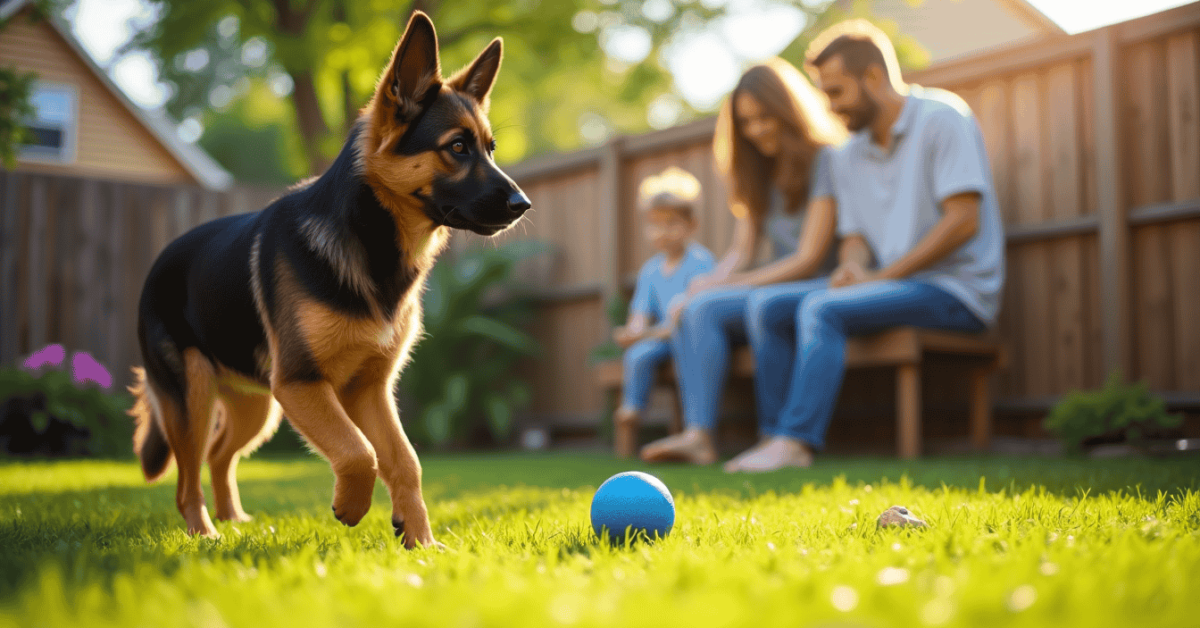A miniature German Shepherd offers everything you love about Germany’s favorite shepherd in a smaller, more manageable package. These compact companions stand just 15 to 20 inches tall and weigh between 20 to 50 pounds.
These intelligent dogs come from hybrid breeding, where standard German Shepherds are crossed with smaller breeds like Collies or Poodles. Their impressive lifespan extends up to 16 years, which gives families more time to create lasting memories together. The loyal and protective nature that German Shepherds are famous for remains strong in these smaller versions.
This piece will help you understand why these compact companions could be your family’s perfect addition. We’ll explore their exercise needs, living space requirements, remarkable intelligence, and training potential – everything you should know about welcoming a mini German Shepherd into your home.
What Makes a Miniature German Shepherd Different?
Miniature German Shepherds are not just smaller versions of their bigger relatives. These compact canines showcase amazing results of crossbreeding that combine German Shepherds’ best traits with more manageable sizes.
Origins and breeding of mini German Shepherds
exists. We created these dogs by crossbreeding standard German Shepherds with smaller dog breeds. Breeders want to keep the beloved traits of German Shepherds while making them smaller.No no such thing as a purebred miniature German Shepherd
Dwarfism in purebred German Shepherds can result in miniature versions. This happens rarely and could cause health issues. Most good breeders choose crossbreeding to create healthy, smaller versions that keep the traditional German Shepherd’s personality and looks.
People wanted apartment-friendly companions with German Shepherd’s intelligence and loyalty. This led to the creation of mini GSDs. The story matches the original German Shepherd’s development – a breed that came from mixing different shepherd dogs from German regions.
Physical characteristics and size expectations
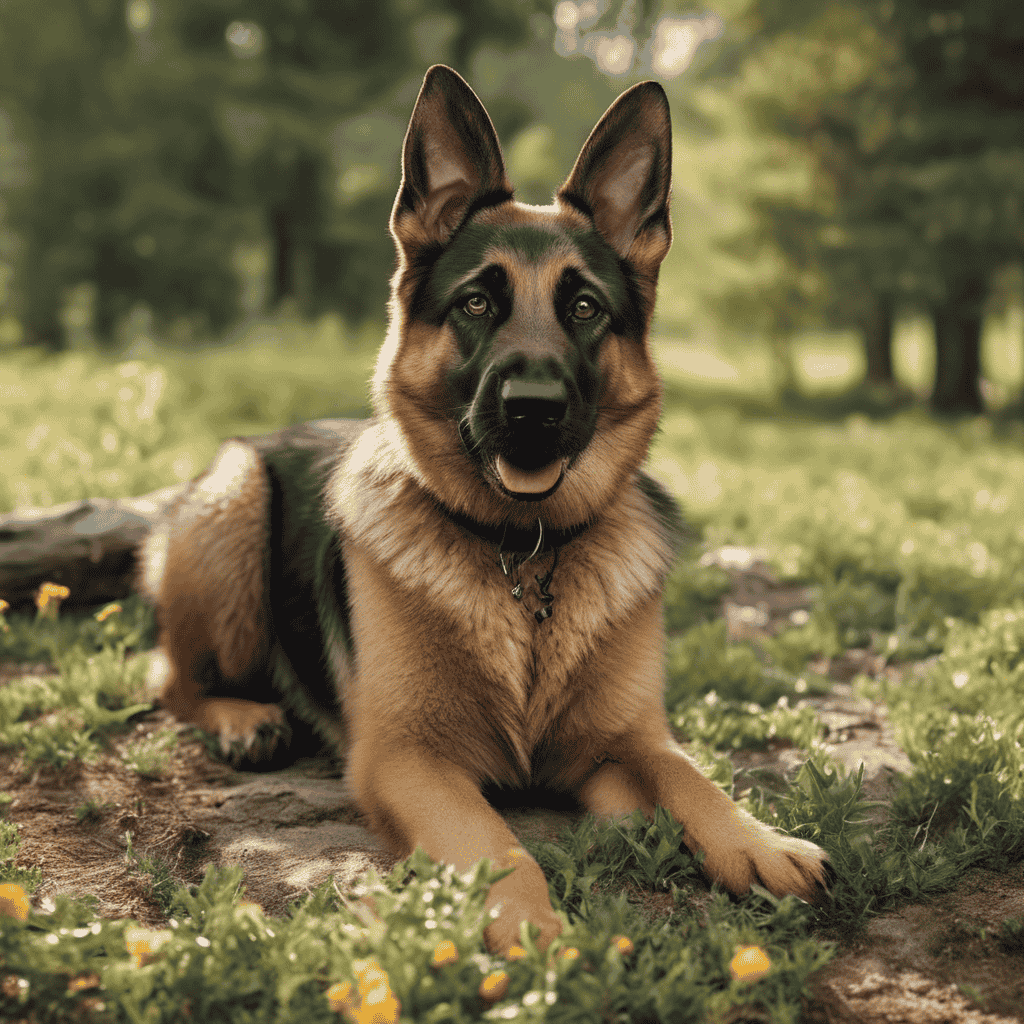
Mini German Shepherds stand 15 to 20 inches tall at the shoulder and weigh 25 to 50 pounds. Standard German Shepherds reach up to 26 inches and weigh 50-90 pounds – about twice the size.
These smaller shepherds look much like their German Shepherd parents with:
- Black and tan or black and red colors
- Straight, pointed ears and watchful looks
- Thick, curved-down tail
- Double coat with slight waves on top
Each puppy’s looks can be very different based on its breeding. Every litter turns out unique, and puppies might get special features from their non-GSD parent.
Common mini GSD mixes and their traits
Many popular mixes create unique mini German Shepherd varieties:
Shepadoodle (GSD + Poodle): Smart dogs that might get Poodle’s low-shedding coat – great news for allergy sufferers. They stay clever like GSDs but tend to be friendlier with new people.
Shollie (GSD + Collie/Border Collie): These dogs love to work and herd with amazing smarts. Their medium-length coat and German Shepherd face make them stand out.
Corman Shepherd (GSD + Corgi): These unique pups mix German Shepherd colors and faces with Corgi’s long, low body and short legs. They usually weigh between 25-50 pounds.
Shug (GSD + Pug): This special mix creates muscular, smart dogs that welcome strangers more warmly than typical GSDs.
Golden Shepherd (GSD + Golden Retriever), Siberian Shepherd (GSD + Husky), and the rare Yorkshire Terrier mix round out the family. The Yorkie mix can create tiny dogs with German Shepherd traits.
Each mix gets different features from its parents. This affects how they look, behave, exercise needs, and potential health issues.
The Family-Friendly Temperament of Mini GSDs
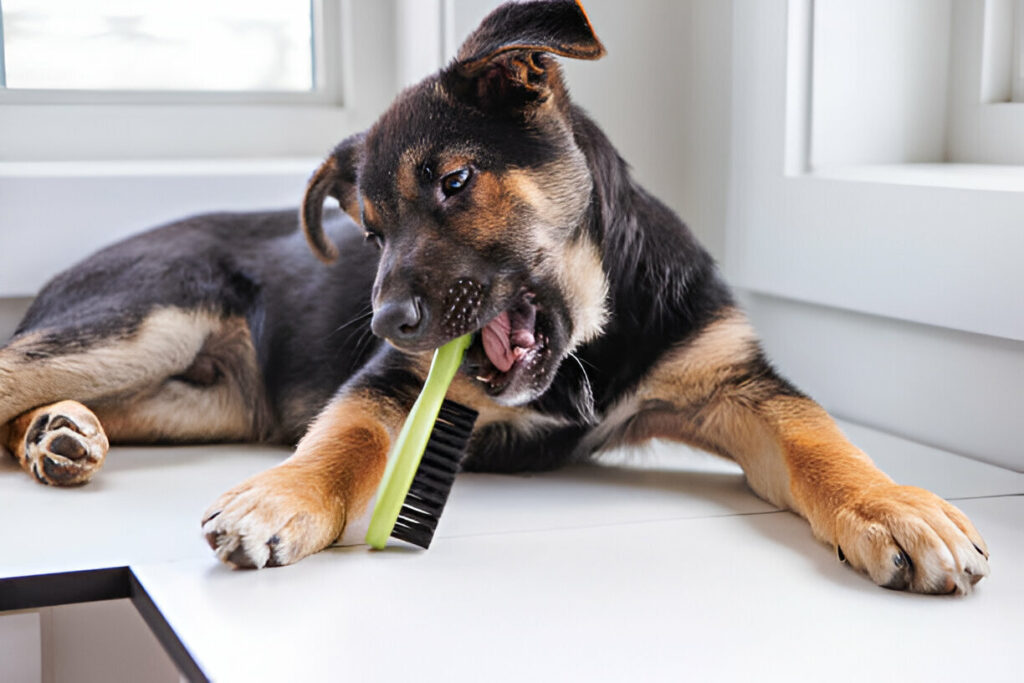
Miniature German Shepherds make ideal family pets thanks to their compact size and unique character. These dogs combine protective instincts with remarkable intelligence and gentle patience to become perfect family companions.
Loyalty and protective instincts
Mini German Shepherds carry the legendary loyalty that standard German Shepherds have shown for over a century. These dogs build exceptionally strong bonds with their families through steadfast dedication.
Their protective nature flows naturally—mini German Shepherds connect deeply with their families and stay watchful, making them excellent guard dogs. They alert their owners about strangers or unusual activities. These dogs maintain their larger counterparts’ vigilant nature without appearing intimidating.
Mini GSDs become alert companions once they bond with their family. They watch constantly for potential threats. Their incredible senses enhance this protective nature. Their powerful nose detects subtle changes that might signal danger, while their keen ears catch sounds humans miss entirely.
Intelligence and trainability
Mini German Shepherds stand among the smartest dog breeds. Their mental abilities shine—German Shepherds match the. This impressive intelligence helps them learn new commands in under five repetitions. They respond correctly 95% of the time on the first try. Same intelligence as a 2.5-year-old human
These small shepherds are:
- Highly biddable and eager to please
- Quick to learn commands and tasks
- Mentally adaptable to different situations
- Capable of understanding complex instructions
Mini GSDs’ trainability makes them valuable family dogs. A breeder with 15 years of experience notes, “A well-bred German Shepherd Dog is highly intelligent, thriving on praise and wanting to please the owner. This combination makes them very trainable”.
Patience with children
Mini German Shepherds show exceptional patience with children, which families love. These dogs excel with kids when socialized early. Their protective nature creates watchful guardians, while their playful spirit makes them fantastic playmates.
These dogs stay gentle and affectionate around children without showing aggression. Their eagerness to please and strong loyalty make them especially kid-friendly. Many German Shepherds, including mini versions, devote themselves to their family’s children. They often become attached and protective guardians.
Supervision remains essential for interactions between young children and mini GSDs. Both dogs and children should learn appropriate ways to interact with each other.
Raising a Mini German Shepherd in Your Home
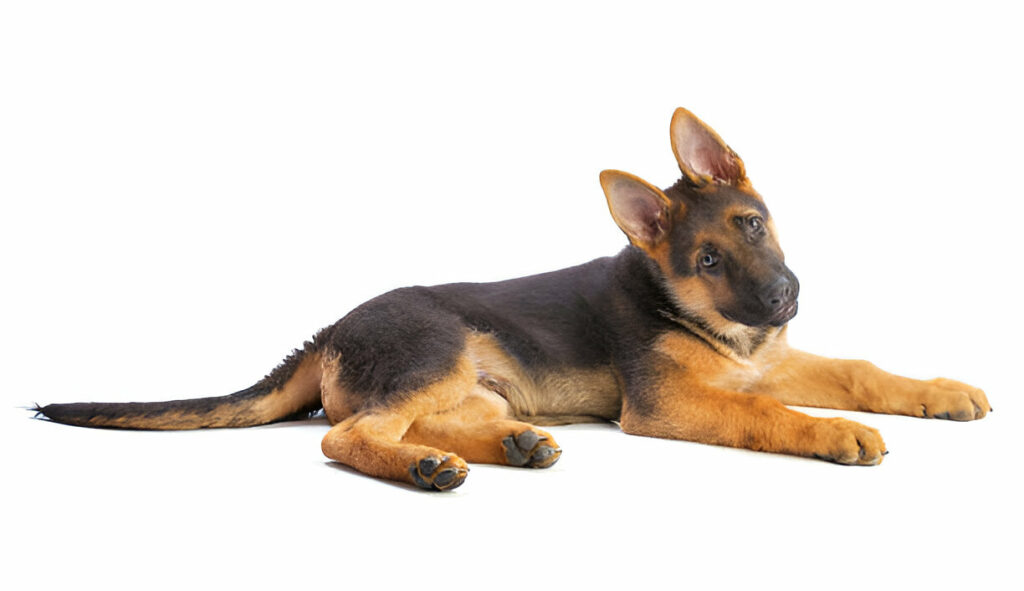
Setting up the perfect home for your mini German Shepherd needs careful planning. These compact canines might be smaller than standard GSDs, but they still need enough space, exercise, and safety to thrive as family pets.
Space requirements and living arrangements
Mini German Shepherds adapt well to different living situations, which is a huge plus. Their smaller size makes them or homes with limited space. These compact companions can adjust well to smaller homes as long as they get enough mental and physical activity.m ore manageable for apartment living
Your mini GSD needs its special area to feel at home. A dedicated spot where your dog can relax without interruption helps them feel secure and part of the family. You should set up:
- A comfortable dog bed in a quiet corner away from foot traffic
- A right-sized crate that serves as a secure den
- A spot for their toys and comfort items
The size of your living space matters less than how you use it for your dog’s needs. Mini German Shepherds can live happily even in smaller apartments with the right setup and attention.
Exercise needs for a healthy mini GSD
Mini German Shepherds usually keep the energetic spirit of standard GSDs. These dogs need regular exercise each day to stay physically and mentally healthy. Most mini GSDs need about 30-60 minutes of daily exercise, while some might need up to 90 minutes based on their specific mix and energy.
A complete exercise routine should include:
- Daily walks and play sessions
- Different physical activities like walking, running, and fun games
- Brain games through training or puzzle toys
- Safe, fenced areas for off-leash play when possible
Dogs that don’t get enough exercise often get bored and might start destroying things. A tired mini GSD usually behaves better!
Creating a safe environment for both dog and family
Your mini German Shepherd’s home should be safe and comfortable. Start by making your space dog-proof—remove dangerous items like electrical cords, toxic plants, and chemicals.
Regular routines help reduce your mini GSD’s anxiety. Dogs do better with structure, so fixed times for meals, walks, and training create a sense of security. Families with children should teach kids to respect their dog’s space, especially during meals and rest times.
The right mix of safety measures, regular routines, and clear boundaries creates a happy home where your mini German Shepherd and family can thrive together.
Training Your Miniature German Shepherd
Mini German Shepherds are exceptionally smart, which makes training them a rewarding experience for everyone in the family. These compact canines can learn commands quickly, develop great social skills, and overcome behavioral challenges with the right approach.
Simple commands and socialization
Your mini German Shepherd’s training should start early. These dogs thrive on mental stimulation and love to learn. A quiet area with minimal distractions works best to start with these commands:
- Sit, stay, come, down, and leave it
- Watch me (for attention)
- Place (go to designated spot)
- Off (remove paws from people/furniture)
Training sessions should last 5 to 10 minutes and end positively. Positive reinforcement works best, so avoid punishment that could confuse your dog and hurt their confidence.
Socialization matters just as much as commands. Your miniature German Shepherd needs exposure to people, environments, and situations from a young age to become a well-rounded companion. These protective dogs might develop excessive guarding behaviors or anxiety without proper socialization.
Family involvement in training
Training becomes more effective when the whole family participates and strengthens bonds with your miniature German Shepherd. Kids often make great trainers for these dogs. Their high-pitched voices, animated expressions, and energetic movements grab a dog’s attention naturally.
The family should use similar verbal cues and reward systems to avoid confusing your mini GSD. Each person can handle different training tasks based on their age—kids can practice simple commands while older family members work on complex training.
Addressing common behavioral challenges
Mini German Shepherds might develop challenging behaviors without proper guidance. Separation anxiety, excessive barking, and leash pulling are problems you might face.
You can help your dog adapt to being alone by increasing alone time gradually. Special treats and puzzle toys should only appear when you’re away. A good exercise session before leaving helps use up extra energy, so your mini German Shepherd will rest while you’re gone.
Start teaching proper walking skills early to prevent leash reactivity. Focus on redirecting attention instead of correcting unwanted behaviors. Mini German Shepherds respond well to training that has clear boundaries and consistent expectations.
Health Considerations for Your Small German Shepherd
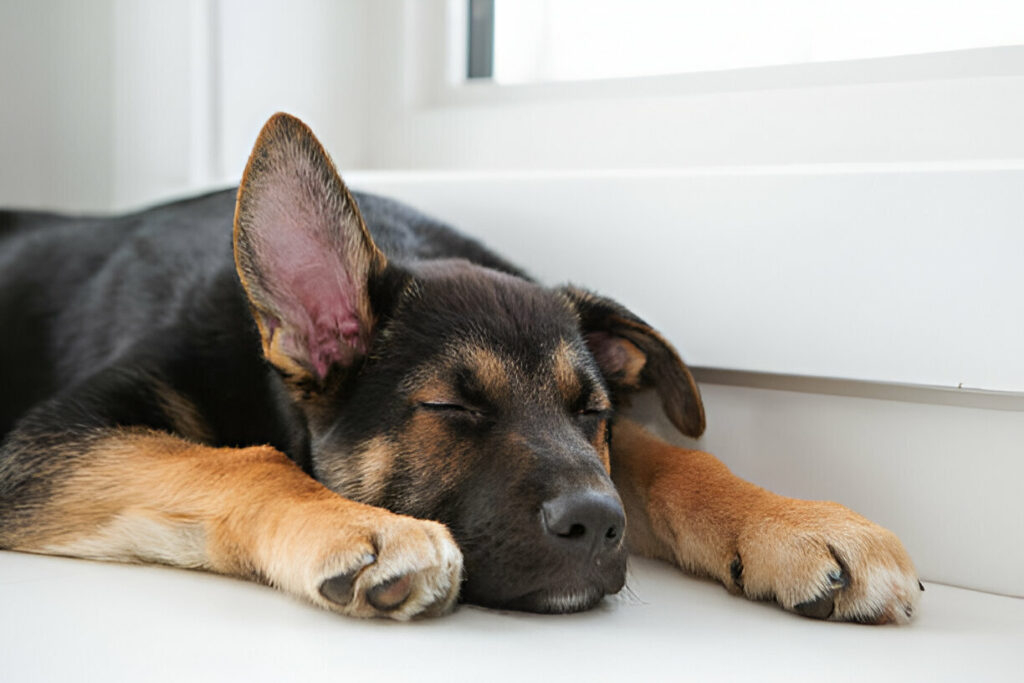
Your miniature German Shepherd’s health profile is a vital part of being a responsible owner. These compact canines tend to stay healthier than standard-sized German Shepherds. They still need careful attention to stay healthy though.
Common health issues to watch for
We noticed that of German Shepherds, including miniature varieties. These conditions show up when joints don’t form correctly and cause pain with mobility problems. Dogs might limp, struggle to get up, or avoid exercise.hip and elbow dysplasia affect about 20%
Bloat (Gastric Dilatation-Volvulus) needs serious attention. This life-threatening condition happens when gas builds up in the stomach, which sometimes twists. Mini GSDs face the highest risk if they eat too fast or exercise right after meals.
Your dog might face these other health challenges:
- Degenerative myelopathy, which affects older dogs’ spines progressively
- Hemophilia, a blood clotting disorder that shows up more in German Shepherds than other breeds
- Megaesophagus, which prevents the esophagus from moving food properly
Preventative care and regular check-ups
Annual vet visits are the foundations of preventative care. These checkups should include complete physical exams and blood work to catch problems early.
Your dog needs regular vaccine updates, protection from parasites, and breed-specific health screenings. The best results come from finding a vet who knows miniature German Shepherds well.
Diet and nutrition for optimal health
Mini GSDs do best with high-quality food rich in animal proteins. Two measured meals each day work better than one big meal to lower bloat risk.
Foods with omega-3 fatty acids, glucosamine, and chondroitin help keep joints healthy – this matters a lot since these dogs often get dysplasia. GSDs with sensitive stomachs usually benefit from probiotics too.
Lifespan expectations
Mini German Shepherds live longer than their standard-sized relatives. Most reach 12-16 years compared to standard GSDs at 9-13 years. Breeders call this extended lifespan “hybrid vigor” – a health bonus that often comes with mixed breeding.
Is a Mini GSD Right for Your Family?
You should think about your family dynamics, living situation, and lifestyle before getting a miniature German Shepherd. These compact canines have many advantages, but might not work for every home.
Matching your lifestyle with a mini German Shepherd
Mini German Shepherds adapt well to homes of all types. Their medium size and energetic yet loyal personality help them thrive in apartments and rural homes alike. They make great companions for hiking, running, and outdoor activities while staying manageable in smaller spaces.
Your daily routine matters more than where you live. Mini GSDs build strong bonds with their families and struggle when left alone too long. These dogs might feel anxious if you travel often or work long hours away from home. They need human interaction and get unhappy without regular time with their people.
Considerations for families with young children
Mini German Shepherds show amazing compatibility with children. They protect, stay gentle, and show natural curiosity toward babies and young kids. Their high energy matches children’s enthusiasm, which makes them perfect playmates.
All the same, good socialization is vital. Teaching respect between your miniature German Shepherd puppies and children creates a happy home. Here’s what you need to know:
- Don’t let children pull ears, tails, or skin
- Respect the dog’s mealtime and play boundaries
- Keep an eye on all interactions between young children and your dog
- Let older children help with care and training
Never leave any dog alone with babies or very young children, whatever their temperament – even a well-trained mini GSD.
Compatibility with other pets
Mini German Shepherds can build great relationships with other pets, but you’ll need to manage their prey drive carefully. Early socialization is key here.
Puppies usually adapt better to cats or small animals than older dogs if you introduce them early. So if you’re adopting an older miniature German Shepherd, ask about their history with other animals.
Well-socialized mini German Shepherds get along with other dogs, especially those raised together from puppyhood. But each dog has their personality, so you should always watch and gradually introduce new pets to ensure everyone gets along in your multi-pet home.
Conclusion
Miniature German Shepherds are a great way to get the best of both worlds – the beloved traits of standard German Shepherds packed into a more manageable size. These dogs possess remarkable intelligence and show steadfast loyalty. Their gentle nature makes them exceptional family companions. While smaller than their standard counterparts, they keep the same protective instincts and trainability that German Shepherds are known for.
Mini GSDs need proper exercise, consistent training, and regular vet checkups to stay healthy. These dogs adapt well to different living situations. Their lifespan stretches up to 16 years, which makes them perfect for families looking for a long-term companion.
A miniature German Shepherd ends up being more than just a pet – they become a devoted guardian, playmate, and family member. They will make your life richer with their presence. These compact shepherds show that great things really do come in small packages.
FAQs
Q1. Are miniature German Shepherds good family dogs? Miniature German Shepherds make excellent family dogs due to their loyal, protective, and gentle nature. They are intelligent, trainable, and typically patient with children when properly socialized. Their compact size makes them adaptable to various living situations while still maintaining the beloved traits of standard German Shepherds.
Q2. What is the typical lifespan of a miniature German Shepherd? Miniature German Shepherds generally enjoy a longer lifespan compared to their full-sized counterparts. On average, they can live between 12 to 16 years, benefiting from what breeders call “hybrid vigor” – the health advantages that often come with mixed breeding.
Q3. How much exercise does a miniature German Shepherd need? Despite their smaller size, miniature German Shepherds are energetic dogs that require regular exercise. They typically need about 30-60 minutes of daily physical activity, which can include walks, playtime, and mental stimulation through training or puzzle toys. Meeting their exercise needs is crucial for maintaining their physical and mental well-being.
Q4. What are some common health issues to watch for in miniature German Shepherds? While generally healthier than standard German Shepherds, mini GSDs can still be prone to certain health issues. These may include hip and elbow dysplasia, bloat (gastric dilatation-volvulus), degenerative myelopathy, and hemophilia. Regular veterinary check-ups and a proper diet are essential for maintaining their health.
Q5. How do miniature German Shepherds differ from standard German Shepherds? Miniature German Shepherds are not simply smaller versions of standard GSDs but are typically crossbreeds. They stand about 15 to 20 inches tall and weigh between 25 to 50 pounds, roughly half the size of standard German Shepherds. While they retain many of the beloved GSD traits, their exact appearance and temperament can vary based on their specific breeding mix.
